
Anleitungen Drehtorantrieb – Gelenkarm
Instructions Automatisme à bras articulé pour
portail à battants
Instructions Articulated arm gate actuator
Instrukties Vleugelpoortaandrijving –
scharnierarm
D
F
GB
NL
Für Service: (49) 6838/907-172
Pour Service: 03-87-98-15-93
For Service: 0800-31-78-47
Voor Service: 020-684-7978
D
F
GB
NL
AGO250L
AGO250R
Page is loading ...
Page is loading ...
Page is loading ...
Page is loading ...
Page is loading ...
Page is loading ...

GB-1
START BY READING THESE IMPORTANT SAFETY RULES
Handle tools and hardware carefully and do not
wear rings, watches or loose clothing while
installing or servicing a gate opener.
I
nstallation and wiring must be in compliance with
your local building and electrical codes. Connect
the power cord only to properly grounded mains.
Disconnect electric power to the gate opener
before making repairs.
Disengage all existing gate locks to avoid damage
to gate opener.
Keep gate balanced. Sticking or binding gates must
be repaired. Do not attempt to repair the gates
yourself. Call for service.
Keep additional accessories out of the reach of
children. Do not allow children to operate push
button(s) or remote control(s). Serious personal
injury from a closing gate may result from misuse of
the opener.
Ensure that persons who install, maintain or
operate the gate opener follow these instructions.
Keep this manual where it can be readily
referenced during maintenance.
These safety alert symbols mean Caution – a personal safety or property damage instruction. Read these
instructions carefully.
This gate opener is designed and tested to offer reasonable safe service provided it is installed and operated
in strict accordance with the following safety rules.
Failure to comply with the following instructions may result in serious personal injury or property damage.
Contents:
Safety Rules: Page 1
Technical data: Page 1
Warranty: Page 1
Contents of the carton: Page 2, Figure
Before you begin: Page 2
Installation of the unit: Page 2, Figures -
Electrical connections: Page 2, Figure.
Safety: Page 3
Check on operation: Page 3
Final remarks: Page 3
Accessories: Page 3, Figure
10
9
82
1
TECHNICAL DATA
WARRANTY
LIFTMASTER warrants to the first retail purchaser of this product
that the product shall be free from any defect in materials and/or
workmanship for a period of 24 full months (2 years) from the date
of purchase for the Wing Gate Openers. Upon receipt of the product,
the first retail purchaser is under obligation to check the product for
any visible defects.
Conditions: The warranty is strictly limited to the reparation or
replacement of the parts of this product which are found to be
defective and does not cover the costs or risks of transportation of
the defective parts or product.
This warranty does not cover non-defect damage caused by
unreasonable use (including use not in complete accordance with
LIFTMASTER's instructions for installation, operation and care;
failure to provide necessary maintenance and adjustment, or any
adaptations of or alterations to the products), labor charges for
dismantling or reinstalling of a repaired or replaced unit or
replacement batteries.
A product under warranty which is determined to be defective in
materials and/or workmanship will be repaired or replaced (at
LIFTMASTER's option) at no cost to the owner for the repair and/or
replacement parts and/or product. Defective parts will be repaired or
replaced with new or factory rebuilt parts at LIFTMASTER's option.
This warranty does not affect the purchaser's statutory rights under
applicable national legislation in force nor the purchaser's rights
against the retailer arising from their sales/purchase contract. In the
absence of applicable national or EC legislation, this warranty will be
the purchaser's sole and exclusive remedy and neither LIFTMASTER
nor its affiliates or distributors shall be liable for any incidental or
consequential damages for any express or implied warranty relating
to this product.
No representative or person is authorized to assume for LIFTMASTER
any other liability in connection with the sale of this product.
Power supply
Capacitor
Transmission ratio
Power rating
Opening angle
Max. duty cycle
Thermal cut-off of motor
Weight of the motor
Operating temperature
Protection class
Max. width of the door
Max. weight of the door
AGO250
230V-240V/50-60Hz
12yF
1:980
300W
125
O
50% / hr.
135 °C
12kg
-35
O
- to +80
O
IP 55
2,5m
200kg

CONTENTS OF THE CARTON
• Unit (1)
• Base Plate (1)
• Key for switch to manual operation (1)
• Hardwarebag (1)
• Manual (1)
• Arm, straight (1)
• Arm, bent (1)
BEFORE YOU BEGIN
The AGO250 is suitable for use with wide piers, up to about
30 cm in width.
Each gate wing should not exceed 2.5m in width or 200kg
in weight.
The maximum recommended opening angle of the gate is
125 degrees.
Ensure that ample space is available next to the drive for the
arms and assembly. Gates exposed to a high wind load must
be fixed with an electric lock for additional protection.
While the drive is fitted with internal limit switches, stops
should also be mounted on the ground to prevent gate rattle
or flutter.
There are many factors which determine the
choice of the right actuator. Assuming the gate is
working properly, the initial output required from the
drive for setting the gate in motion is at its highest.
♦ Size of gate: The size of the gate is very important. The
correlation between gate size and wind force can distort the
amount of power need.
♦ Weight of gate: The specified weight of the gate only gives
a rough indication of the output required from the drive. The
function which the gate is expected to perform is also
important in this connection.
♦ Temperature: Low outdoor temperatures can make it more
difficult or impossible to set the gate into motion (e.g.
because of soil changes).
High outdoor temperatures may cause the temperature cut-
off (at about 135 °C) to be triggered earlier.
♦ Operating frequency, duty cycle: The sliding gate
actuator has a maximum duty cycle of 50% (e.g. 50% of
one hour).
NB: The drive is not designed for long-term operation at the
maximum duty cycle. If the drive overheats, it will switch
itself off automatically until the cut-in temperature is
reached. The outdoor temperature and the gate
characteristics are important factors in determining the
actual duty cycle.
1
PREPARATIONS
Before installation, please check contents of packaging.
Please remember that you will require some additional
material not included in the assembly kit delivered, such as
empty piping, cables, screws, plugs, etc. In order to avoid
undesirable motion, the wing should be stable and the hinges
should have as little play as possible. The easier the gate
moves, the more precise the force adjustment need to be.
Wooden gates with high degrees of flexibility should be
reinforced with a metal frame.
INSTALLATION OF THE UNIT -
1. Mount the arms on the motor (Fig. 2). Switch to manual
operation by inserting and turning the hexagonal key
provided (Fig. 3).
2. Select and mark the mounting height on the pier (Fig. 4).
3. The side of the gate mounted to the pier should be stable.
If necessary, it should be reinforced, e.g. with a metal
frame. Make sure that the screws used are long enough to
ensure stable mounting. Ensure that there is enough room
(Fig. 5).
4. The arm should not be mounted while fully extended (see
Fig. 6). The drive is self-locking. The unit should be
mounted with an offset of about 90 degrees. If the arm’s
point of contact is further to the outside, it will require less
room at the side but it will be harder to drive. Mount the
drive provisionally (e.g. with finger-tight thumb-screws),
and check the mounting position by opening the gate
manually.
5. Finding the right mounting position. Mount the drive on the
pier and attach it to the gate. The drive exerts a great
amount of force on the pier. A steel pier will provide the
most stability. Welding the supplied hinge plate directly on
to the pier will generally provide enough room for mount
(see Fig. 7 A + B). In the case of thick brick or concrete
piers, the hinge plate should be welded onto a support
plate, that is mounted in such a way that the plugs cannot
work loose. Adhesive shear connectors are better than
steel or plastic wedge anchors for this purpose. A threaded
rod is then mounted into the masonry with a stress free
adhesive seal. A watertight distribution unit should be
mounted on the pier next to the hinge plate. The feed
cable for the wing gate opener is led into this unit from
underneath (Fig. 8).
ELECTRICAL CONNECTIONS
We recommend use of the control unit GOC1A.
The coding of the connection terminals is as follows
(Fig. 9):
N= neutral (blue)
L1= On or Off (change over if necessary)
L1= On or Off (change over if necessary)
Do not forget to earth the system!
The capacitor is already factory-wired.
9
82
GB-2

GB-3
CHECK ON OPERATION
Activate the function "Automatic close” on the control unit. If
the gate opens automatically after the preset time, exchange
the brown and black leads.
LIMIT SWITCH
1. Most control units have a time function. This should always
be set 3 - 5 seconds more than the time actually required.
The preliminary setting should be made for more than this
to allow a safety margin. After the necessary adjustments
to the system have been made, the time can be set more
accurately. NB: The drive works more slowly under
windy conditions.
2. The internal limit switch of the AGO turns the drive off
when the preset point is reached. Remove the cover of the
drive unit, and turn the cam until the desired end point has
been reached. Check which cam has which function (e.g.
top cam opens gate).
Switch the drive on, let it run until the desired point is
reached and interrupt the current with the aid of the main
switch. Now turn the limit-switch dial to the microswitch
trigger point. Tighten the cam with an Allan key until it
cannot be moved further. Repeat this procedure on all
limit-switch dials.
SAFETY MEASURES
The wing gate opener should always be operated in
conjunction with flashing lights, contact strips and
photoelectric barriers for added safety. In any case, take care
to comply with the relevant standards and regulations.
FINAL REMARKS
Arrange the handover of the wing gate opener with your
customer Make sure that persons will operate the gate are
familiar with its functions and can operate them without
problems. Have your customer practice operating the gate
until he is fully acquainted with all the following:
• Main switch.
• Rules of operation (e.g. do not drive through while the gate
is still opening).
• Additional safety features (photoelectric barrier, contact
strip, flashing lights, etc.).
• Switch to manual operation in case of power failure.
• Provide the customer with a full set of instructions. Inform
him to keep them in a safe place and read them when
possible.
• Reference a checklist, so that you have a record of which
functions have been explained and of any points not dealt
with.
Fig. 10 shows the complete installation.
ACCESSORIES
(1) Model FLA230-2 Flashing Light
(2) Model 100263 Infrared barrier
(3) Model 100027 1-Function Keyswitch,
surface mount
(Flush mount - 100010)
Model 100041 2-Function Keyswitch,
surface mount
(Flush mount - 100034)
(4) Model 760E Key switch
(5) Model 600046 2.5 Safety Edge Set (Small)
(6) Model 600053 20m Bulk Pack Safety Edge
Profile (Small)
(7) Model 600060 Assembly Pack Safety Edge
(Small)
(8) Model 600152 Assembly Pack Safety Edge
(Medium/Large)
(9) Model 600077 Bulk pack (not shown)
(10) Model 600145 20m Bulk Pack Safety Edge
Profile (Large) (not shown)
(11) Model 600138 20m Bulk Pack Safety Edge
Profile (Medium) (not shown)
(12) Model 600176 1m Safety Edge Profile (Large)
(not shown)
(13) Model 600169 1m Safety Edge Profile (Medium)
(not shown)
(14) Model 600008 IR Sensor Stand - 530mm
(15) Model 600015 Key Switch Stand - 1100mm
10
709153-GB © Chamberlain GmbH, 2000
Page is loading ...
Page is loading ...
Page is loading ...
Page is loading ...
Page is loading ...
Page is loading ...

Declaration of Conformity
Automatic Gate Opener...........................................................................................Model AGO250
is in conformity to the applicable sections of Standards..............................EN55014, EN61000-3,
EN60555, EN60335-1, & ETS 300 683
per the provisions & all amendments of the EU Directives .......................73/23/EEC, 89/336EEC
Declaration of Incorporation
Automatic Gate Opener Models AGO250, when installed and maintained
according to all the Manufacturer’s instructions in combination with a Gate Door,
which has also been installed and maintained according to all the Manufacturer’s
instructions, meets the provisions of EU Directive 89/392/EEC and all amendments.
I, the undersigned, hereby declare that the equipment
specified above and any accessory listed in the manual
conforms to the above Directives and Standards.
Chamberlain GmbH
D-66793 Saarwellingen
November, 2000
EG-Konformitätserklärung
Der automatische Torantrieb................................................................................Modell Nr. AG250
erfüllt alle Bedingungen der
Richtlinien ....................................................................................................EN55014, EN61000-3,
............................................................................................ETS 300 683, EN60555, & EN60335-1
sowie die Zusätze .....................................................................................73/23/EEC, 89/336/EEC
Integrationserklärung
Der automatische Torantrieb Modell AGO250 erfüllt, wenn er in Verbindung mit einem
Garagentor gemäß Herstelleranweisungen installiert und instandgehalten wird, alle
Bedingungen der EU-Richtlinie 89/392/EEC und deren Zusätze.
Ich, der Unterzeichner, erkläre hiermit, daß das vorstehend
genannte Gerät und das in der Montageanleitung aufgeführte
Zubehör, die vorstehenden Vorschriften und Richtlinien erfüllt.
Chamberlain GmbH
D-66793 Saarwellingen
November, 2000
Colin B. Willmott
Chefingenieur
Colin B. Willmott
Chefingenieur
-
 1
1
-
 2
2
-
 3
3
-
 4
4
-
 5
5
-
 6
6
-
 7
7
-
 8
8
-
 9
9
-
 10
10
-
 11
11
-
 12
12
-
 13
13
-
 14
14
-
 15
15
-
 16
16
-
 17
17
Chamberlain AGO250L Owner's manual
- Category
- Gate Opener
- Type
- Owner's manual
Ask a question and I''ll find the answer in the document
Finding information in a document is now easier with AI
in other languages
- français: Chamberlain AGO250L Le manuel du propriétaire
- Deutsch: Chamberlain AGO250L Bedienungsanleitung
- Nederlands: Chamberlain AGO250L de handleiding
Related papers
-
Chamberlain ECO300K Owner's manual
-
Chamberlain ART300K Owner's manual
-
Chamberlain LiftMaster LYN300, LYN400, SCS300K Owner's manual
-
Chamberlain HC400ML-2 Owner's manual
-
Chamberlain LiftMaster BAS300K Owner's manual
-
Chamberlain LiftMaster SUB300 Owner's manual
-
Chamberlain TPD500 Owner's manual
-
Chamberlain Motorlift ML700 Instructions Manual
-
Chamberlain CB11 Owner's manual
-
Chamberlain CB22 Owner's manual
Other documents
-
Chamberlain LiftMaster UGO300M Owner's manual
-
Chamberlain LiftMaster ART300 K Owner's manual
-
Chamberlain LiftMaster SUB324 Owner's manual
-
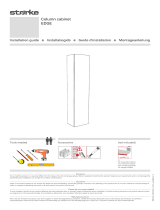 storke 88715 Installation guide
storke 88715 Installation guide
-
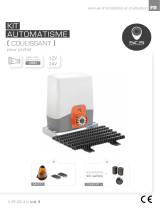 SCS Sentinel MCO0039 Owner's manual
SCS Sentinel MCO0039 Owner's manual
-
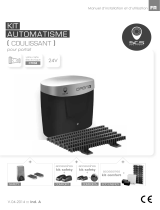 SCS Sentinel MCO0035 Owner's manual
SCS Sentinel MCO0035 Owner's manual
-
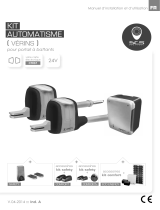 SCS Sentinel MVE0033 Owner's manual
SCS Sentinel MVE0033 Owner's manual
-
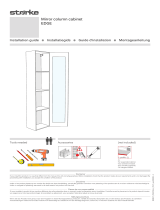 storke 83820 Installation guide
storke 83820 Installation guide
-
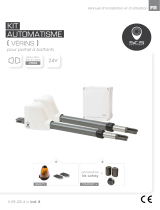 SCS Sentinel ACCESS 1 FAMILY Owner's manual
SCS Sentinel ACCESS 1 FAMILY Owner's manual
-
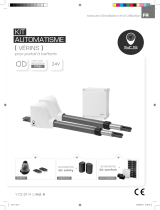 SCS Sentinel MVE0004 Owner's manual
SCS Sentinel MVE0004 Owner's manual























